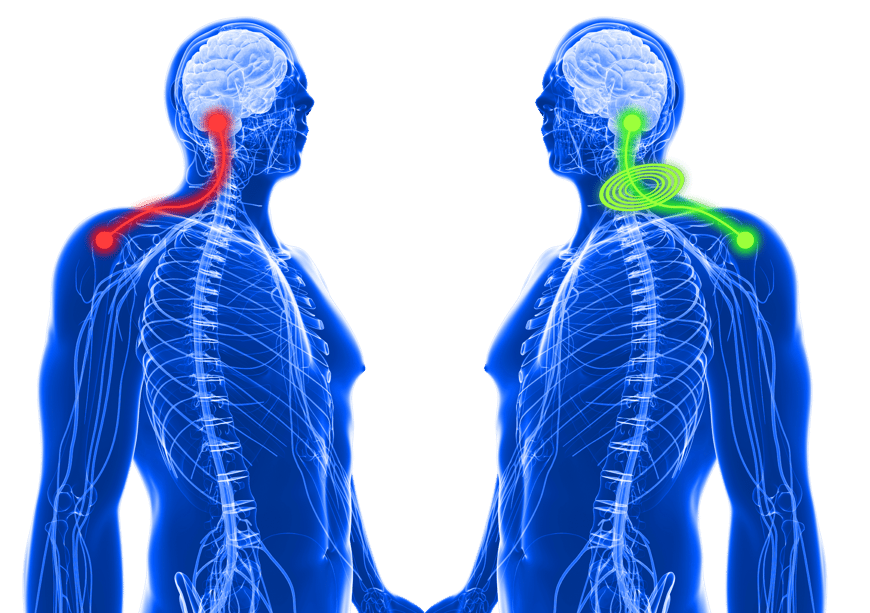If you’re perusing these corners of the vast interweb, you’ve no doubt heard of electrotherapy. Tools like the increasingly popular TENS are being promoted and used as a safe and effective treatment for pain. But what you may not know is how this therapy gets its acronym. Interestingly, the name is actually quite revealing in terms of how it works. So what does TENS stand for?
What Does TENS Stand For?
The simple answer is that TENS stands for Transcutaneous Electrical Nerve Stimulation. Let’s break that down to look at each individual word, and how it explains the TENS process. We will start with the least familiar word, “transcutaneous.” The first element, “trans,” is from the Latin work that means “across, beyond, through.” You might recognize it from words like “transcend” and “transportation,” etc. “Cutaneous” is from the Latin work “cutis,” meaning “skin.” Put the two pieces together and you have transcutaneous, which refers to something applied across the skin.
The rest of what the acronym TENS stands for is relatively self-explanatory. A TENS unit will create gentle electrical impulses, and then send those through the skin—or transcutaneously, if you will. These electrical impulses in turn stimulate the nerve endings. Thus, this process of therapy is described as Transcutaneous Electrical Nerve Stimulation.

How is TENS Therapy Effective?
Now that we have answered the question of “what does TENS stand for,” it pays to answer the “why” and “how” of TENS therapy’s effectiveness. It’s clear that the goal of the electrical impulses is to stimulate the nerve endings at the area of pain. When done at a high enough intensity setting, this nerve stimulation will be strong enough that it relieves the pain. Users feel relief from the pain because it’s instantly replaced with a pleasant sensation. Many people describe the sensation of TENS therapy to feeling similar to a massage, or as a gentle and pleasant tingling sensation.
The Gate Control Theory of Pain
But how exactly does the stimulation from the electrical impulses get rid of the pain? The main theory that is used to explain this is called the gate control theory of pain. This theory states that the nerves can only send one signal to the brain’s receptors at a time. Given the choice between the two, it will send the non-painful input. In other words, when something non-painful occurs at an area where there has been pain, the non-painful input will “close the gate” of the painful input, so to speak.

So, when TENS is applied to an area of pain, such as tight shoulders, an injured lower back, or aching wrists, the pain is replaced by the tingling, massage-like sensation of the TENS unit. And, because TENS therapy is sent transcutaneously, it offers a noninvasive way of treating pain. For most people, this is one of its greatest appeals. TENS therapy lets those who suffer from chronic or acute pain catch a break with a safe and natural alternative to drugs. Read more about how TENS Units can combat carpal tunnel. While the acronym TENS may stand for one thing, TENS as a groundbreaking treatment stands for something bigger—the freedom to find safe relief anytime and anywhere.
.png?width=320&height=80&name=11.3.17-Logo-with-passion-colors-and-roboto-font-AI-v3-(320-x-80).png)



%20jpg-1.jpg?width=300&name=11.13.17%207070%20Banner%20(300%20x%20250)%20jpg-1.jpg)

